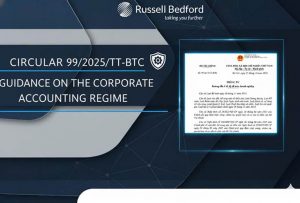In today’s turbulent global economy, navigating business risks is crucial. While large corporations often have ample resources, Small and Medium-sized enterprises (SMEs) are particularly vulnerable to challenges. This article explores the unique risks SMEs face and outlines essential strategies for building resilience, from securing cash flow and clarifying internal roles to fortifying supply chains and protecting intellectual property. It is time for SMEs to embrace proactive risk mitigation, moving beyond simply surviving to thriving in uncertain times.
A landscape of financial crises
The 21st century has seen numerous financial crises affecting nations and the global economy. Recent years have brought economic turmoil to Greece, Argentina, and Russia. The 2008 global financial crisis, deemed the worst since the 1930s Great Depression in the US, was primarily caused by overleveraged investment banks on mortgage-backed securities, which collapsed due to widespread mortgage defaults.
Today, the global economy is again facing issues that, unless tackled, are bound to translate into financial problems. While still grappling with the aftermath of a two-year global pandemic, we are now facing the repercussions of a nearby raging war. These challenges continue to leave their unique imprints on the financial markets.
The unique vulnerability of SMEs
SMEs have consistently been crucial to every economy and will remain so for many years to come. Their contribution is acknowledged by the World Bank, stating that SMEs account for about 90% of businesses and over 50% of global employment. By 2030, an estimated 600 million jobs will be needed to sustain economic growth, with SMEs at the core of this development.
However, for SMEs navigating risks has never been more daunting. How can they alleviate the daily stresses associated with managing cash flow, securing financing and addressing global megatrends and challenges such as technological advancements, sustainability, and globalised supply chains?
Whether big or small, all companies face the same fundamental risks during these uncertain times, albeit on different scales and levels. However, SMEs face even more significant challenges because they tend to be very constrained in resources and access to finance. They also need to have a short-term focus and proceed with their business with little time to think about risk mitigation and proper future planning.
The role of professional guidance
Accountants and consultants can contribute significantly to risk management and mitigation for SMEs. Many small businesses already rely on these professionals for regular, value-adding advice. Depending on the specific risks faced by the SME, the accountant or consultant can provide guidance and support in implementing and monitoring business controls.
Building a robust approach to risk
So, where to start? It always starts from the top. The clarity of roles among the owners, founders, and top management is paramount. Think of the boardroom as the company’s brain, where overarching strategies are formulated, corporate policies established, and crucial business decisions made. Therefore, it is essential for SMEs to implement fundamental “dos and don’ts.” These initial guidelines will eventually evolve into the company’s charter. Furthermore, the owners’ individual roles and responsibilities need to be clearly defined and separated, ideally aligning with their unique skill sets and character traits, with possibly one person taking a leading role.
Next, you will want to master your business’s costs and Key Performance Indicators (KPIs). Excellent financial management is essential here. This requires understanding industry benchmarks, your daily operating expenses, various product costing methods, your overall pricing strategy, the key drivers of efficiency, and, critically, performing a thorough break-even analysis.
Ultimately, liquidity – the availability of cash – is the most critical factor for any business. While a booming sales order book and a stellar income statement look fantastic on paper, they are meaningless if debt collection is slow, capital expenditures are unsustainable, or sales returns are draining your cash flow. Without healthy liquidity, a company simply cannot survive long-term.
Prioritising cash flow for business resilience
It is a common pitfall for business leaders to become so consumed by daily operations, such as human resources issues or deal closures, that they neglect the critical task of generating sufficient cash. Companies require adequate capital and reserves not only to meet their working capital obligations. Furthermore, in times of crisis, ample reserves are essential to weather the storm with minimal damage.
To ensure sustained growth and stable operations, a company should be focused on generating enough operating cash flow to fund its investments. This strategic focus on cash flow is paramount for long-term survival and success.
Navigating SME challenges
For SMEs, cash management is especially tough right now, given the stringent and less flexible lending environment from banks. SMEs also face a unique set of challenges, including supply chain vulnerabilities, sustainability, and Intellectual Property (IP) protection. Recent global events like the China/US trade tensions, the pandemic, and the war in Ukraine have severely disrupted supply chains. Businesses must identify and analyse both external risks (like those global events) and internal risks (such as logistics and workforce skill gaps).
To mitigate these risks, companies should diversify their options. This means actively engaging with various suppliers and subcontractors (e.g., attending fairs and exhibitions), networking with industry peers and even competitors, and staying informed. It is crucial to have a well-mapped supply chain with multiple options across different regions.
Finally, protecting developed IP is a critical risk mitigation strategy that adds intrinsic value to any business. Investing in IP can help secure funding and keep assets in the family long-term.In summary, this article merely scratches the surface of a comprehensive risk management plan, highlighting why companies should not hesitate to seek help when needed. A crucial first step is acknowledging that risks are not a matter of “if” but “when” they will impact your business. Top management must remain vigilant, constantly identifying potential risks and allocating ample time to develop mitigation strategies. It is naïve to assume a company’s journey will always be smooth; therefore, risk mitigation should be a central tenet of any business strategy and a top concern for entrepreneurs.
Source: News, views and analysis from Russell Bedford International (September 2025 Newsletter)




















